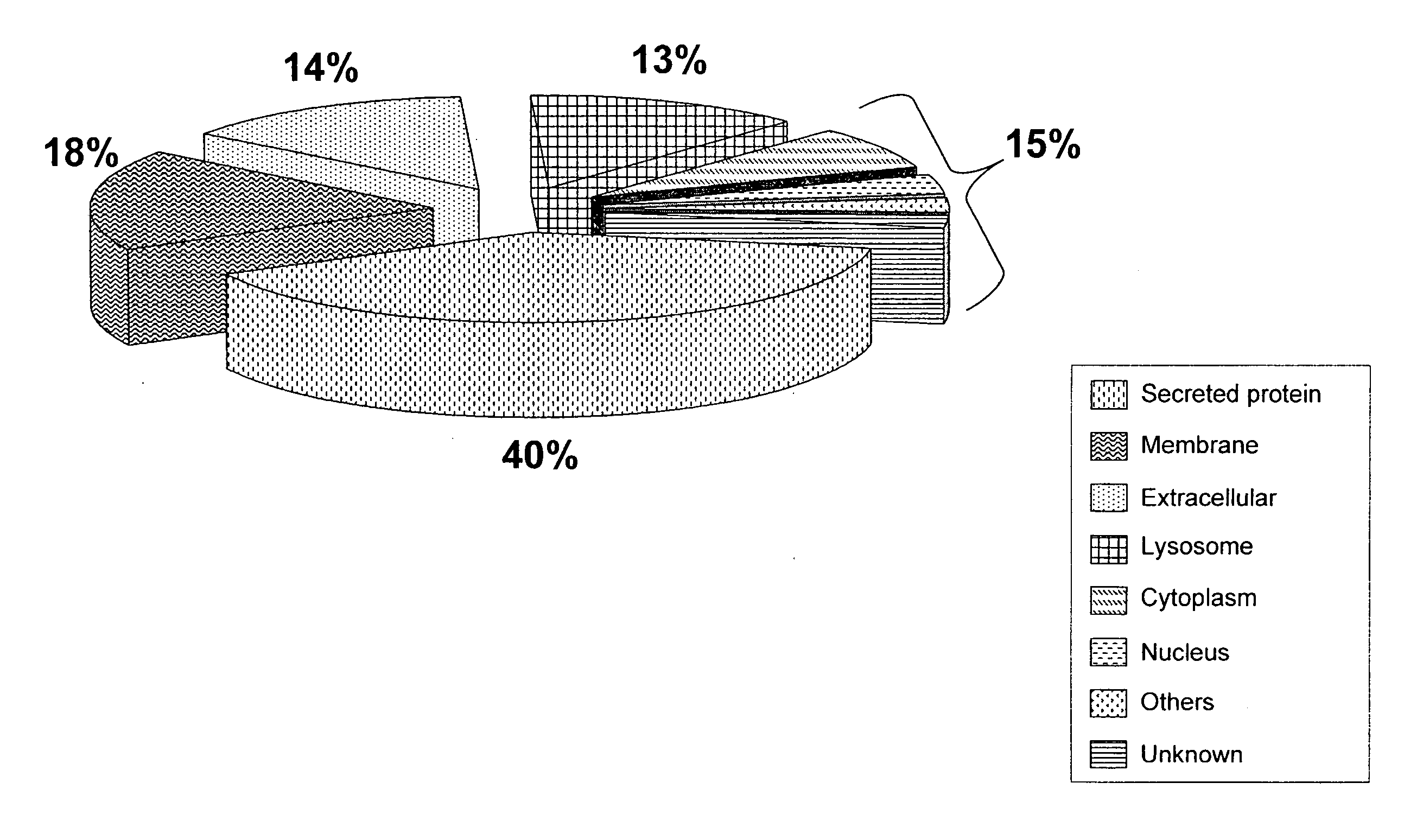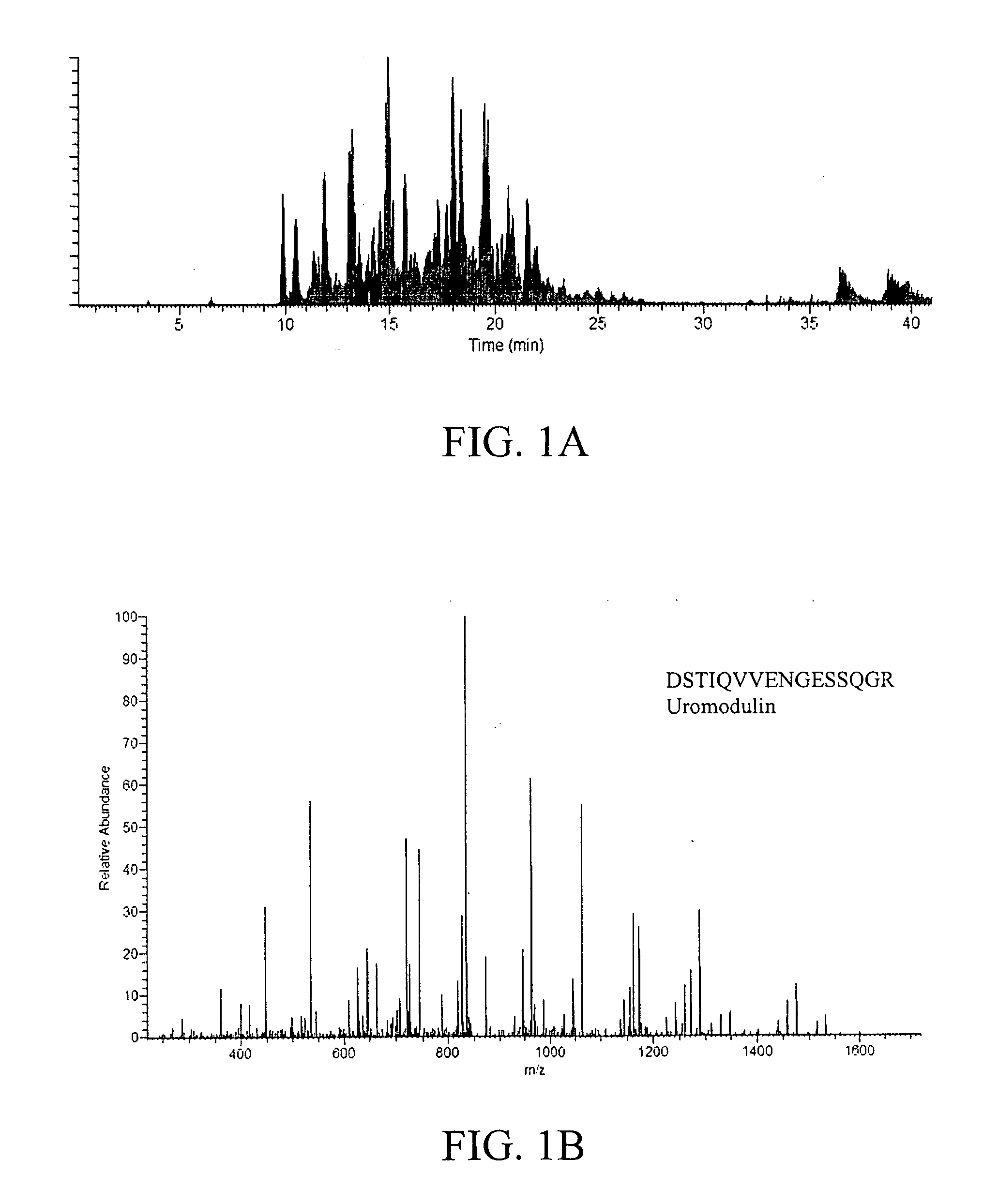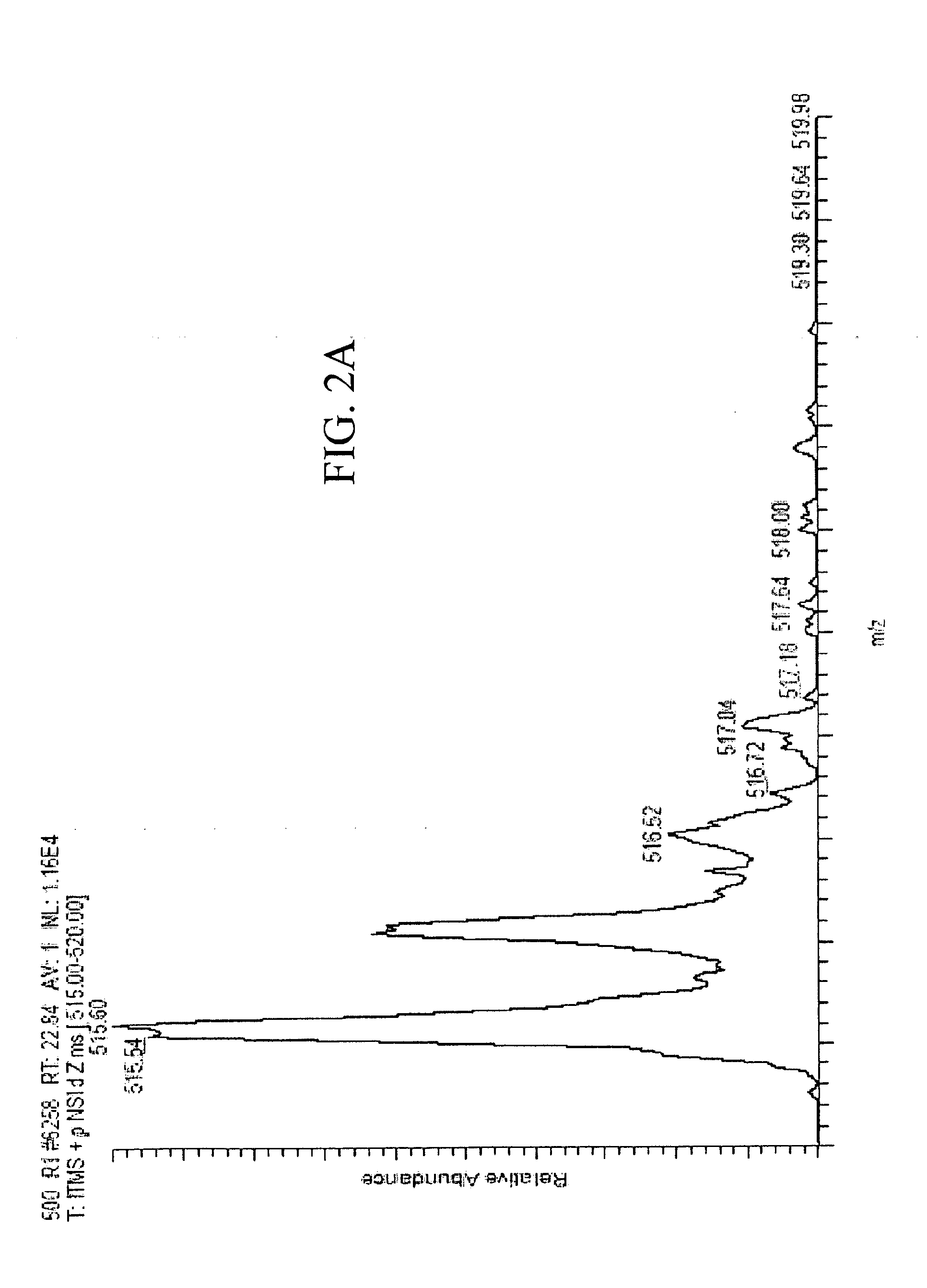Glycoprotein Profiling of Bladder Cancer
a bladder cancer and glycoprotein technology, applied in the direction of fluid pressure measurement, liquid/fluent solid measurement, peptide measurement, etc., can solve the problems of inability to rapidly provide, interobserver variation, and relatively high cost, and achieves simple, rapid, reliable, accurate and cost-effective effects
- Summary
- Abstract
- Description
- Claims
- Application Information
AI Technical Summary
Benefits of technology
Problems solved by technology
Method used
Image
Examples
example 1
Urinary Protein Content
[0166]In the present study, the glycoprotein profile of urine obtained from patients was investigated and compared with cystoscopically confirmed bladder cancer or no evidence of bladder cancer (Table 1). Protein concentration of normal urine is estimated to be less than 100 mg / L (Adachi, J. et aL Genome Biol, 2006, 7(9):R80). The measurements of urinary protein concentrations from non tumor-bearing patients in the present study were consistent with the reported value (average of 31 mg / L) except for one patient that showed a sign of proteinuria, (defined as >150 mg / day protein) most likely due to a high level of hematuria. The average protein concentration urine from tumor-bearing patients was 127 mg / L. The greater amount of protein recovered from bladder cancer patients' urine meant that 7-15 mL of urine was typically sufficient for this analysis; however, a larger volume of asymptomatic patient urine was required, i.e., 15-30 mL. Agarose-bound Concanavalin A...
example 2
Mass Spectrometric Analysis
[0167]Con A bound proteins were subjected to mass spectrometric analysis. A semi-shotgun approach was used where the bound fractions were enzymatically digested and analyzed by nano-LC / MS / MS. For each scan, the three most abundant peptides were sequenced. FIG. 1A is a representative nano-LC / MS / MS base peak chromatogram, showing the detection of the more abundant ions across a 40-min gradient separation. The peak capacity of the nano-LC separation was estimated to be ˜60 to 120 based on examining the full-width-at-half-maximum (fwhm). This implies that >60 peptides can be sequenced within a single run; however, it is important to note that multiple peptides were detected within a single resolved peak from all experimentally based peak chromatograms, which is commonly observed from LC / MS / MS analysis of highly complex samples. FIG. 1B shows a representative MS / MS spectrum of a peptide sequence from uromodulin, one of the most abundant proteins in urine, ident...
example 3
Glycoprotein Identification
[0168]Both tryptic digest fractions and tryptic digest / PNGase F fractions were analyzed and their results were combined to increase confidence in protein identification. Removing glycans from digested peptides with PNGase F is reported to provide a stronger signal for the peptide ions compared to the glycan remaining intact (Wang, Y. et al. Glycobiology, 2006, 16(6):514-23). Based on the current results, it was indeed found that glycopeptides were poorly identified when only the tryptic digest fractions were analyzed, but after tryptic digest / PNGase F treatment, a number of glycopeptides were positively identified from the same fraction. In the experiments of this study, all SEQUEST search parameters and data filtering were the same, except that 1 Da was allowed for modification of Asn for deglycosylated digests. Table 3 lists the peptides that were not detected in the fraction with the tryptic digestion alone, where # denotes the glycosylated site of the ...
PUM
| Property | Measurement | Unit |
|---|---|---|
| Concentration | aaaaa | aaaaa |
Abstract
Description
Claims
Application Information
 Login to View More
Login to View More - R&D
- Intellectual Property
- Life Sciences
- Materials
- Tech Scout
- Unparalleled Data Quality
- Higher Quality Content
- 60% Fewer Hallucinations
Browse by: Latest US Patents, China's latest patents, Technical Efficacy Thesaurus, Application Domain, Technology Topic, Popular Technical Reports.
© 2025 PatSnap. All rights reserved.Legal|Privacy policy|Modern Slavery Act Transparency Statement|Sitemap|About US| Contact US: help@patsnap.com



